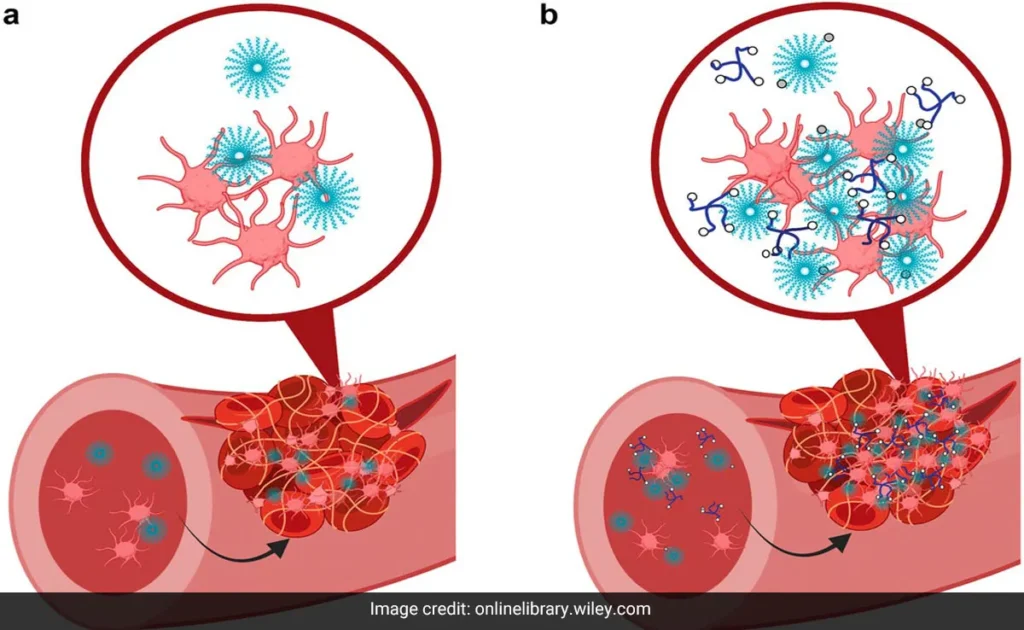Synthetic Blood Clot: To Save Lives By Preventing Internal Bleeding
Blood clotting is the defence mechanism of human body when there is bleeding in our body due to injury. If there is a critical injury, our body may not be capable of making blood clots. In this article, we will discuss how the discovery of this synthetic blood clot can save lives.
Researchers at MIT have developed two-component material that imitates the components responsible for blood clot formation. It has proven to be a significant finding in the mouse model.
There are certain situations where medical help may not be available to the injured person in time. During this time, the synthetic blood clotting system can help you control the blood loss. It provides them some time to get the medical attention needed. Thus, it is crucial for saving many people’s lives.
When we suffer severe accidents or injuries, there is a high chance that we may suffer internal injury. The human body has a natural defence system to cease this bleeding. But, if the condition is severe and results in bleeding, our body may not have sufficient elements to form blood clotting.

image source:https://c.ndtvimg.com/2023-04/g0dqfnuo_twocomponent-material-designed-to-halt-internal-bleeding_625x300_27_April_23.jpg
Natural blood clotting in the body is possible because of 2 components of the blood: platelet and fibrinogen. Here, the platelet initiates the blood clotting process, while the fibrinogen assists the blood clot formation process.
When the bleeding begins, the plates get attracted to the bleeding site and starts forming sticky clot made up of platelets, fibrinogen, and other protein. If the injury is minor, the natural blood clotting is enough to help the injured person. But if the condition is severe and there is a lot of bleeding, the plates are lost, making blood clot formation difficult.
Researchers developed this system of two elements to promote synthetic blood clotting. This system includes a nanoparticle and a polymer.
- Nanoparticle: It includes a biocompatible polymer that recruits the platelets and binds to them. A peptide helps this particle to form a bind with the platelets. This process will help this system to reach the injured site, and platelets are attracted to the site.
- Polymer: It is used to imitate the task of the fibrinogen that assists the platelets in blood clot formation.
These artificial elements can imitate platelets and fibrinogen and help a person form a synthetic blood clot to stop or reduce internal bleeding. It was seen in the mouse model that when these complementary systems are used in sequence, there is a high chance of forming a strong blood clot.
To summarise, the synthetic blood clotting system could be life-saving. Historically, internal bleeding has been seen to be a significant factor responsible for the fatal condition of patients who suffer severe accidents and injuries. For this, the researchers came up with a nanoparticle to imitate the function of platelets and a polymer to imitate the function of the fibrinogen. This gives rise to the synthetic blood clotting system that could help the patient survive till proper treatment is available.


